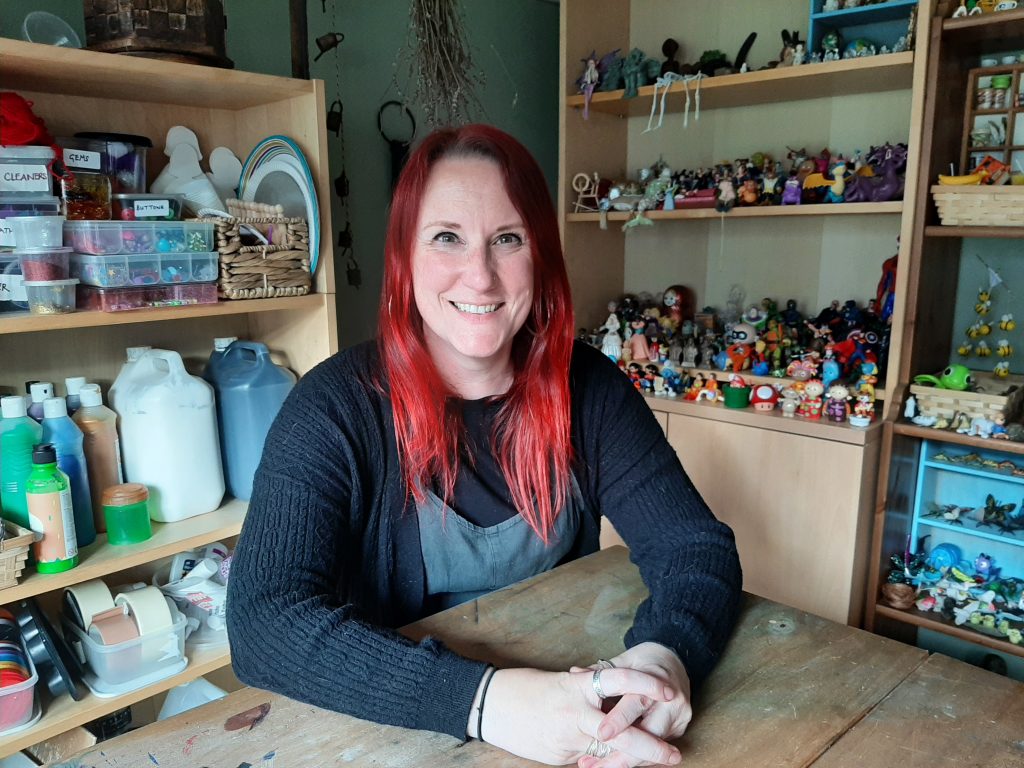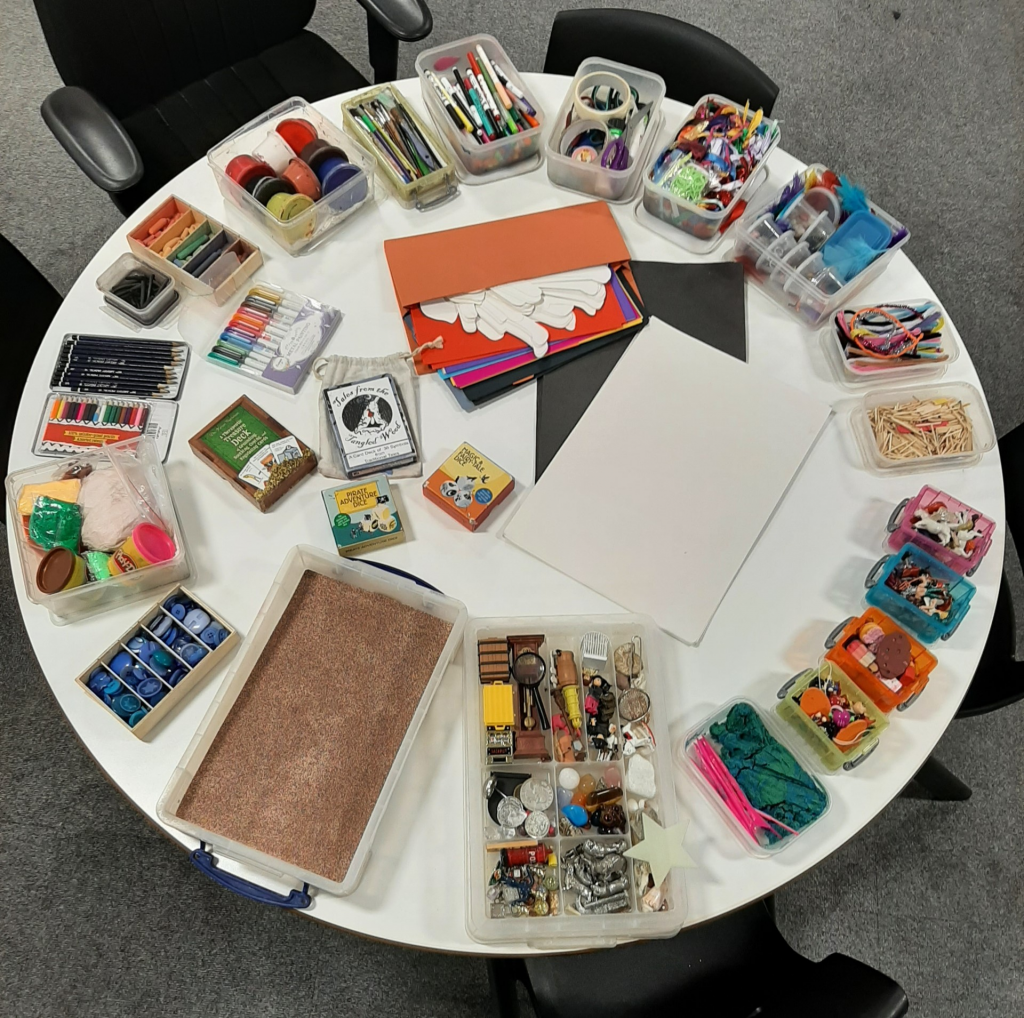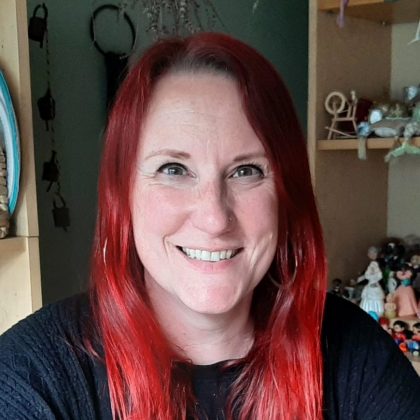Working as an art therapist in schools
Spotlight
 Who are you?
Who are you?
I trained as an art therapist at Chester University, UK, graduating in the spring of 2014. I have been a self-employed art therapist ever since.
Where I work as an art therapist
I travel to different schools to work with the children and young people during the school day. I also deliver private sessions and supervision in my studio at home or online.
Getting here
Growing up, I was very engaged with art and creativity, regularly visiting the museum and art gallery in Birmingham, my home city. I also loved the library and reading – especially fairy tales. At school, I had the opportunity to take part in an art project with Hollymoor Hospital and it was then that I first heard of art therapy. I moved to Chester to undertake a degree in art and ended up staying here.
I worked in nurseries and Early Years for 12 years, training in art therapy part-time in my last few years in the classroom. My work gave me valuable experience in building the relationships with children that are so important in therapy. It also gave me useful insight into how schools work and the different issues that can arise.
Both at home with my own children and at work, reading stories together was one of the most enjoyable and valuable parts of the day. We often explored fairy tales in games and artwork long after the story was over. Something about these stories and the symbols within them felt significant.
I am passionate about developing our knowledge of the incredibly rich world of traditional tales, and the potential they have in therapy. My art therapy kit always contains a set of fairy tale symbol cards, that I created to use in sessions, as well as a selection of traditional tale books. Research in neuroscience shows that there are many benefits of reading stories together and this can also be a helpful way of building therapeutic relationships.

A typical day at work
On a day when I am working in a school, I will take my mobile art therapy kit with me and arrive in plenty of time to set up and check with staff if there are any updates on the children and young people I will be working with.
For each session, I collect the child or young person from their classroom, and we walk to art therapy together. Often, we start with a check in and then read a story or symbol card to spark art making. We end sessions with an activity to transition out of art therapy and back to learning in the classroom – tidying up, naming any feelings they want to leave behind in the room, shaking like jellies, stretching tall like giraffes! At the end of art therapy, we walk back to class together.
Sometimes, safeguarding issues come up during sessions so I will speak to my school contact immediately after the session. Between appointments, I will often make an image to help me think about and remember the contents of each session. Then, at the end of the day, I will write up my clinical notes.
I check my art therapy kit regularly to make sure there are plenty of art materials and will also make a note of any requests for extra equipment from the children and young people.

What I love about what I do
A highlight of working as an art therapist in schools is seeing children and young people use images and symbols to show something about their lives that was difficult to express using words. Seeing positive changes in the lives of the children and young people, however seemingly small, and having these changes noticed by staff during day-to-day school life is always encouraging.
Seeing a child show something about their life or experience and then discover something about themselves is an honour. Being able to build a relationship with a child or young person who has found engaging with adults difficult, and then seeing them progress as they start to use the language they have learned, through engaging with images and stories, to articulate themselves is one of the most rewarding parts of my job.
Each session of every day is different – getting to know each child and young person and what is important to them is a privilege.
How I look after myself in my role
As a self-employed practitioner moving from school to school and working alone, it has been important to find a creative and supportive network; to feel connected to a community. I am a member of two online groups; one provides opportunities for creative exploration and continued professional development and the other is a small circle immersing ourselves in fairytales and reflecting on the insight they give us. I also find support through clinical supervision and my own personal therapy.
I carry on with my own art practice and very much enjoy exploring stories as often as I can – you can see one of my artworks on the front covers of the International Journal of Art Therapy (Art Therapy with Children, 2019) and InSight (Autumn, 2023).
I continue to listen to, read, and search for stories – the ‘to read’ pile is steadily getting more and more out of hand! Listening to music and getting outside for a walk also refuel my energy and reset my mind.
What I wish I had known when I started
There were a lot of practicalities that had to be learned along the way, including what is most useful to pack in a mobile art therapy kit and how to manage carrying it! There has been learning around working in less-than-ideal rooms and how best to transport children’s work (wet paintings, delicate models) if there is no confidential storage space.
Sharing with staff what art therapy is, what it isn’t, and how it can help the children and young people is essential – talking to staff about how important it is to protect a physical space for art therapy, keep that space consistent, and make sure sessions aren’t interrupted is an important part of setting up an effective service. Gently keeping clear and consistent boundaries around this has been particularly important in schools. There are sometimes practical issues that need to be negotiated around how to work in rooms with no sink, carpets that may get messy during artmaking, or no confidential storage space for artwork.
Keeping time in between sessions to clear up and prepare for the next child is integral – allowing me to physically tidy the room and prepare mentally for each child or young person and what they will bring.
Working as an outside professional going into schools and being the only art therapist can feel isolating. It is important to find contact staff within each school and to keep up to date with what is going on in the wider school community, including any planned trips that may mean sessions are missed. A supportive network and self-care are vital to manage this way of working.
Moving forward
It can be so helpful to children and young people when they can access art therapy within school. I believe early intervention is vital – even very young children can access art therapy and benefit from working in this way despite being unable to use spoken language. I would like to see more schools being aware of the benefits of art therapy and setting up art therapy services to support their children and young people. This feels especially important at this time when children and young people have such limited access to therapy despite the growing need.
In my own practice, I feel that the use of stories in art therapy sessions is an incredibly rich way of working; using the language of symbols and metaphors fits so well with art therapy. I am passionate about the value this can have for children and young people and have just embarked upon a PhD to develop future research in this area.
Find out more
Find out about our upcoming course, led by Carol, on using fairy tales in art therapy
Read our recent InSight article on art therapy in primary schools
